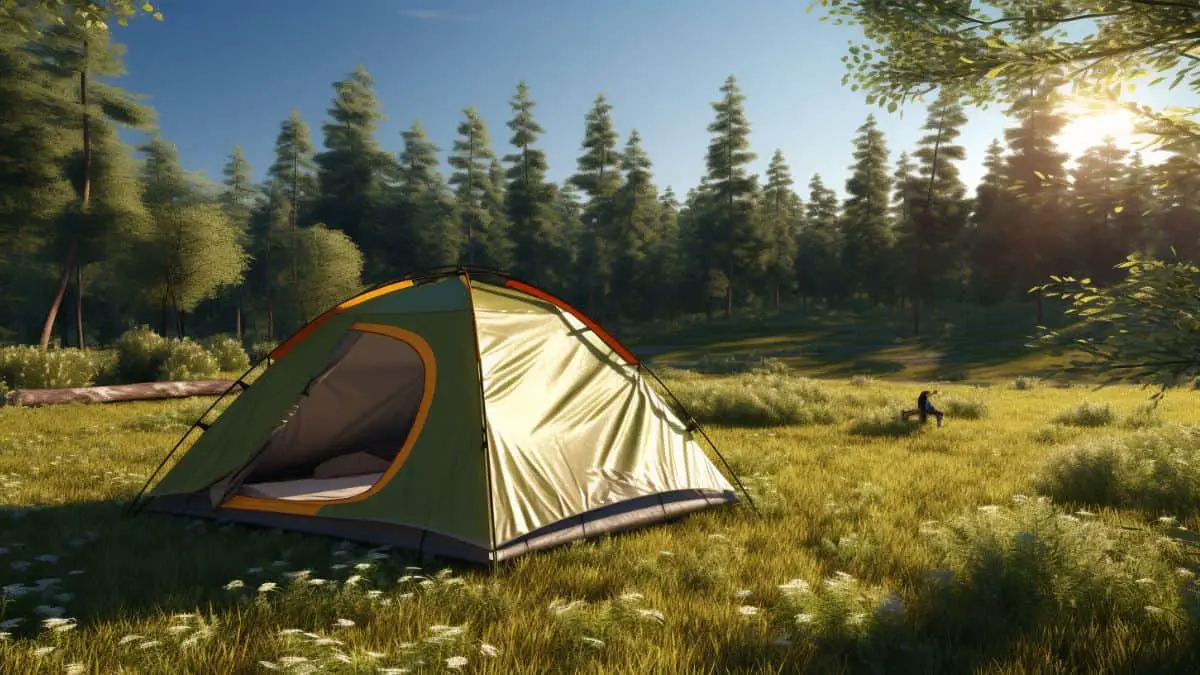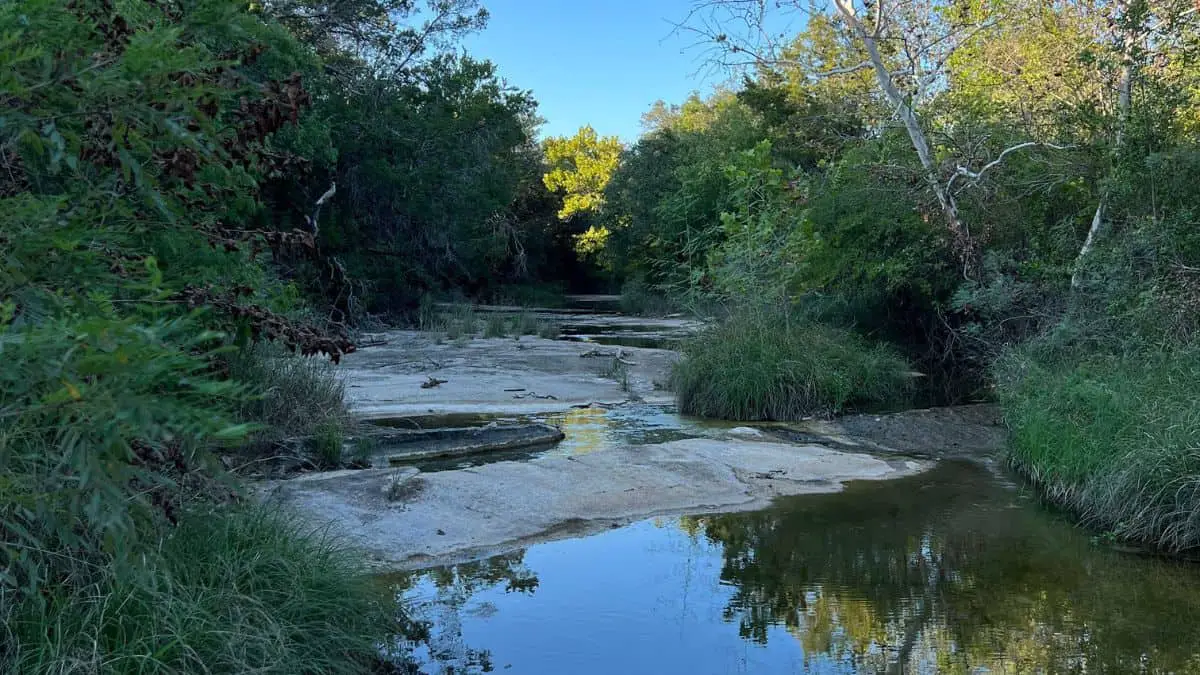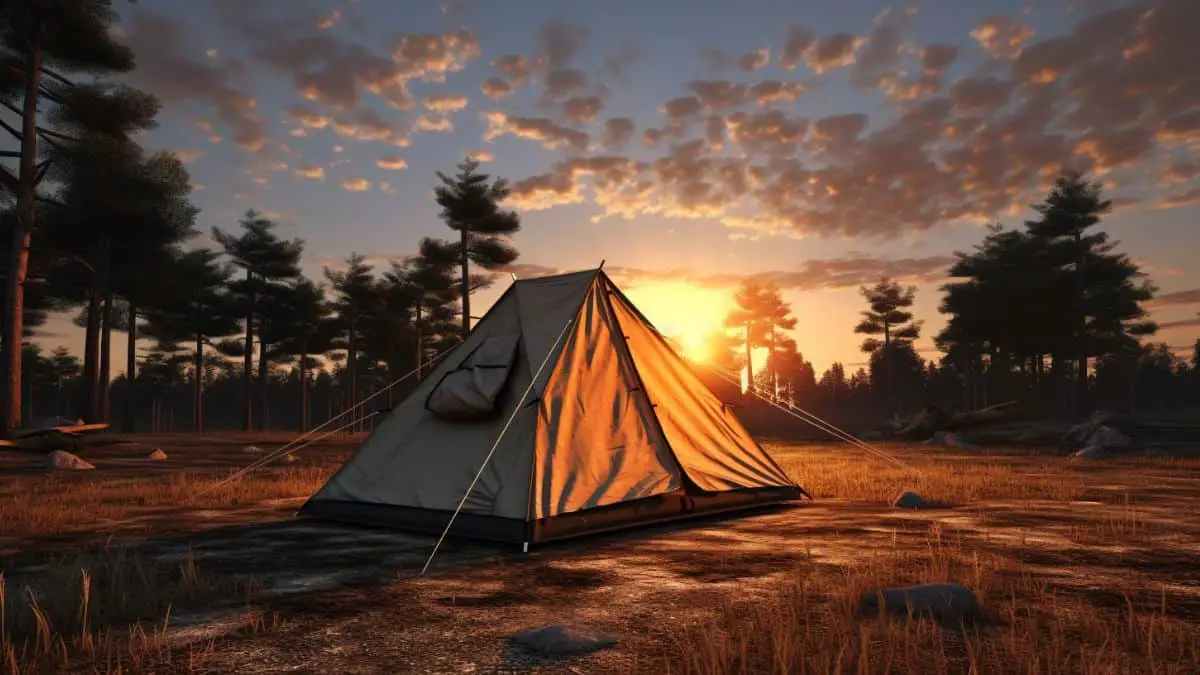Hot Weather Camping Outfit Tips
If you click and purchase with one of our links, we earn a commission. Thanks.

Table of Contents
- Introduction
- Understanding Weather Conditions
- Choosing the Right Base Layers
- Opting for Light and Breathable Mid-Layers
- Selecting Appropriate Outer Layers
- The Significance of Light Colors
- Accessories and Additional Gear
- Hydration and Nutrition Tips
- Safety Considerations and Tips
Introduction

As we delve into the world of hot weather camping, insights from seasoned outdoor enthusiasts become a guiding light. They emphasize the criticality of choosing the right gear, not just for comfort but for safety under the sweltering sun. Even if you can keep your tent cool in the summer, you still need to dress properly.
They must be lightweight and wick away sweat while also providing protection against sunburn.
This insight sheds light on several key aspects:
- Lightweight Clothing: Vital for mobility and comfort during extended periods of physical activity.
- Moisture Management: The ability to effectively wick away sweat is not just a matter of comfort but also of hygiene and skin health.
- Sun Protection: Considering the intense exposure to UV rays, clothing that offers sun protection is a non-negotiable aspect.
- Breathability: Garments that allow for air circulation are essential in preventing overheating and maintaining a stable body temperature.
- Durability: The rugged nature of camping demands attire that can withstand the elements and the wear-and-tear of outdoor activities.
- Versatility: Clothing that can adapt to changing weather conditions and diverse camping activities adds value to the camper’s wardrobe.
In essence, the choice of attire for hot weather camping goes beyond aesthetic considerations, encompassing a range of factors that ensure a safe and enjoyable outdoor experience. This comprehensive approach to selecting the right gear is crucial for those who wish to embrace the beauty of nature while staying protected from its harsher elements.
Understanding Weather Conditions
Selecting the appropriate base layers is a critical step in preparing for hot weather camping. These layers serve as the foundation of your outfit, directly impacting your comfort and performance in outdoor activities. Key points to consider include:
- Fabric Choice: Opt for materials like polyester or merino wool for their moisture-wicking properties and breathability.
- Fit and Comfort: Ensure a snug yet comfortable fit that allows for ease of movement.
- Odor Resistance: Materials that inhibit odor are preferable for extended trips.
- Layering Flexibility: Base layers should work well with other clothing items for effective layering.
-
Quick Drying: Fabrics that dry quickly are essential to prevent discomfort and chafing.
I wear Under Armor brand for my base-layer t-shirts. I have found them to be affordable, comfortable, and very effective at wicking away sweat.
Mark Wilcox
This approach to base layer selection highlights the importance of balancing functionality with personal preference. It’s not just about choosing any clothing item, but about selecting those that meet the specific demands of hot weather and the rigors of camping. By focusing on these key elements, campers can ensure they are well-prepared for their adventures, regardless of the temperature or terrain.
Choosing the Right Base Layers
To reach a length of approximately 300 words for Section 3, I’ll expand the content and include a table. Here’s the revised section:
Section 3: Selecting Appropriate Outer Layers
When it comes to hot weather camping, the choice of outer layers is as crucial as the base layers. These layers play a significant role in protecting against the elements while ensuring comfort. Here’s an in-depth look at selecting these critical components:
Material: Durability and breathability are key. Fabrics like lightweight nylon or breathable synthetics offer protection without trapping heat.
Fit: A loose fit is preferable as it allows for air circulation, helping to keep the body cool.
Versatility: Look for clothes that can adapt to changing weather conditions.
Protection: Outer layers should provide adequate protection from sun and insects.
Ease of Maintenance: Choose materials that are easy to clean and quick to dry.
Style and Comfort: Personal preference in style should not be overlooked, as comfort is subjective and varies from person to person.
I love Elimtick pants. They are lightweight, wick away sweat, and I haven't had a sunburn or tick bite in the past 3 years while wearing these pants.
The right outer layer can make a significant difference in your overall comfort and protection.
| Aspect | Details |
|---|---|
| Material | Lightweight, breathable, and durable fabrics. |
| Fit | Loose fit for better air circulation. |
| Versatility | Adaptable to varying weather conditions. |
| Protection | Shields against sun and insects. |
| Maintenance | Easy to clean and quick to dry. |
| Style and Comfort | Aligns with personal preference and comfort. |
Opting for Light and Breathable Mid-Layers

Selecting the right mid-layers is a nuanced art. These layers provide additional protection and can be adjusted as temperatures fluctuate. Here’s an expanded view:
Material Choice: Favor materials that are light and promote air circulation. This aids in temperature regulation and comfort.
Layering Strategy: Mid-layers should complement both base and outer layers for effective insulation and breathability.
Adaptability: Choose mid-layers that can be easily added or removed based on temperature changes.
Moisture Management: Opt for fabrics that wick moisture away from the body, essential in hot and humid conditions.
Comfort and Fit: Ensure these layers fit comfortably without restricting movement.
I prefer to wear fishing shirts unbuttoned and untucked. I prefer that my undershirts are able to be tucked into my pants but this is personal preference.
This tip highlights the importance of personal comfort and preference in layering strategies. The ability to adjust your layers based on your activity level and the weather is crucial for maintaining comfort during hot weather camping.
Here’s a table summarizing the key aspects of choosing mid-layers:
| Aspect | Details |
|---|---|
| Material Choice | Light, breathable fabrics for comfort. |
| Layering Strategy | Should complement base and outer layers. |
| Adaptability | Easy to add or remove as needed. |
| Moisture Management | Wicking fabrics for humid conditions. |
| Comfort and Fit | Comfortable fit, allowing freedom of movement. |
Selecting Appropriate Outer Layers
When it comes to hot weather camping, the choice of outer layers is as crucial as the base layers. These layers play a significant role in protecting against the elements while ensuring comfort. Here’s an in-depth look at selecting these critical components:
Material: Durability and breathability are key. Fabrics like lightweight nylon or breathable synthetics offer protection without trapping heat.
Fit: A loose fit is preferable as it allows for air circulation, helping to keep the body cool.
Versatility: Look for clothes that can adapt to changing weather conditions.
Protection: Outer layers should provide adequate protection from sun and insects.
Ease of Maintenance: Choose materials that are easy to clean and quick to dry.
Style and Comfort: Personal preference in style should not be overlooked, as comfort is subjective and varies from person to person.
I wear Elimtick pants. They are lightweight, wick away sweat, and I haven't had a sunburn or tick bite in the past 3 years while wearing these pants.
| Aspect | Details |
|---|---|
| Material | Lightweight, breathable, and durable fabrics. |
| Fit | Loose fit for better air circulation. |
| Versatility | Adaptable to varying weather conditions. |
| Protection | Shields against sun and insects. |
| Maintenance | Easy to clean and quick to dry. |
| Style and Comfort | Aligns with personal preference and comfort. |
The Significance of Light Colors
When camping in hot weather, the color of your clothing can have a more significant impact than you might expect. Light colors are preferred for their ability to reflect sunlight, rather than absorbing it like darker colors. This choice can be crucial in managing body temperature and comfort. Here are some key points:
- Reflects Sunlight: Light colors reflect sunlight, helping to keep the body cooler.
- Less Heat Absorption: Dark colors tend to absorb more heat, which can be uncomfortable in hot weather.
- Visibility: Brighter colors enhance visibility, an important safety aspect in certain outdoor environments.
"I prefer bright blue. Though I do wear a black base t-shirt. But I wear this shirt all year long and the dark colors hide grime better." --- Mark Wilcox
This insight reflects a practical approach to color selection, balancing the benefits of light colors for temperature management with personal preferences for aesthetics and practicality.
Accessories and Additional Gear
Section 6: Accessories and Additional Gear
For hot weather camping, accessories are not just add-ons but essential elements that enhance comfort and protection. They include a variety of items, from headgear to footwear, each serving a specific purpose.
- Headgear: A wide-brimmed hat provides shade and protects against sunburn.
- Neck Gaiter: Offers sun protection for the neck and can double as warmth in cooler weather.
- Insect-Repellent Socks: Such as Elimitick hiking socks, to prevent bug bites.
-
Footwear: Lightweight, quick-drying, and grippy shoes like Salomon Men’s Speedcross are ideal for trail conditions.
I wear a no-name brand-wide brimmed hat.
Mark Wilcox
This recommendation emphasizes the importance of well-chosen accessories that cater to various needs, from sun protection to insect defense.
| Accessory | Function |
|---|---|
| Wide-Brimmed Hat | Provides shade and sun protection. |
| Neck Gaiter | Protects neck from the sun; versatile for different weathers. |
| Insect-Repellent Socks | Prevents bug bites, essential in wooded areas. |
| Trail Running Shoes | Lightweight, quick-drying, and provide good grip. |
Hydration and Nutrition Tips
Staying hydrated and maintaining proper nutrition are critical in hot weather camping. The challenges of the environment make it imperative to focus on these aspects for safety and performance.
- Hydration: Regular and adequate water intake is essential to prevent dehydration.
- Electrolyte Balance: Supplements like LMNT, Gatorade, or NUUN can help maintain electrolyte balance.
- Innovative Solutions: Adding electrolyte tablets to coffee or carrying salt packets can be effective, especially in extreme conditions like desert hiking.
-
Monitoring Intake: Be conscious of the amount and frequency of water and electrolyte consumption.
I always carry a 1-liter water bottle that I can use to add electrolyte powders.
Mark Wilcox
Safety Considerations and Tips
In hot weather camping, safety is paramount. Being aware of the risks and knowing how to mitigate them is essential for a successful outdoor experience.
- Stay Hydrated: Regular hydration is crucial to avoid heat-related illnesses.
- Frequent Breaks: Take breaks often to prevent overheating.
- Early Start: Begin activities early in the day to avoid the hottest temperatures.
-
Awareness of Weather Conditions: Even in cooler weather, dehydration and overheating can occur.
Always stay hydrated. Take frequent breaks. Get started early. Don't forget that you can get dehydrated even in cooler weather. The closest I've come to heat illness was in the low 80s.
Mark Wilcox